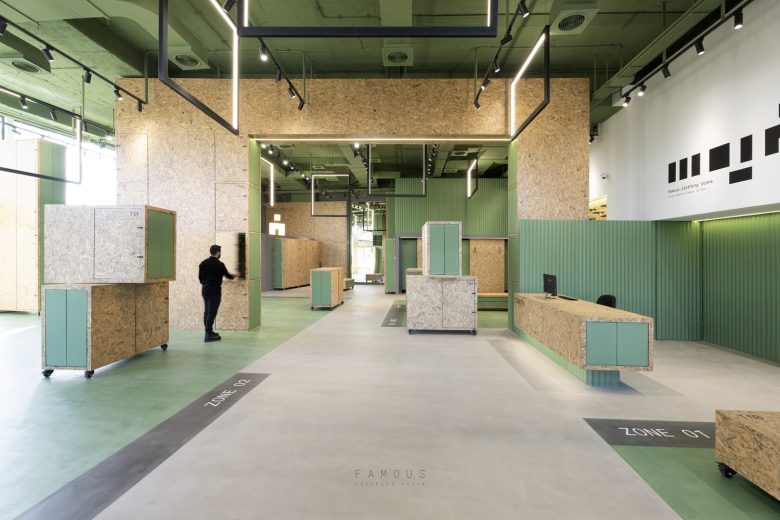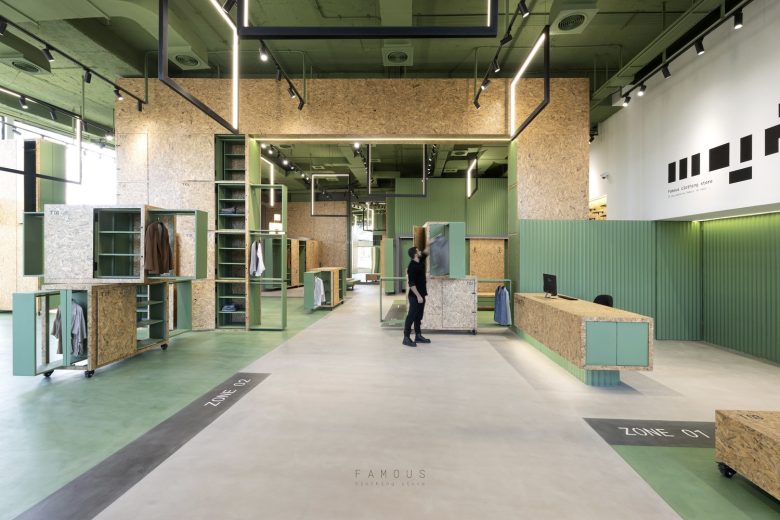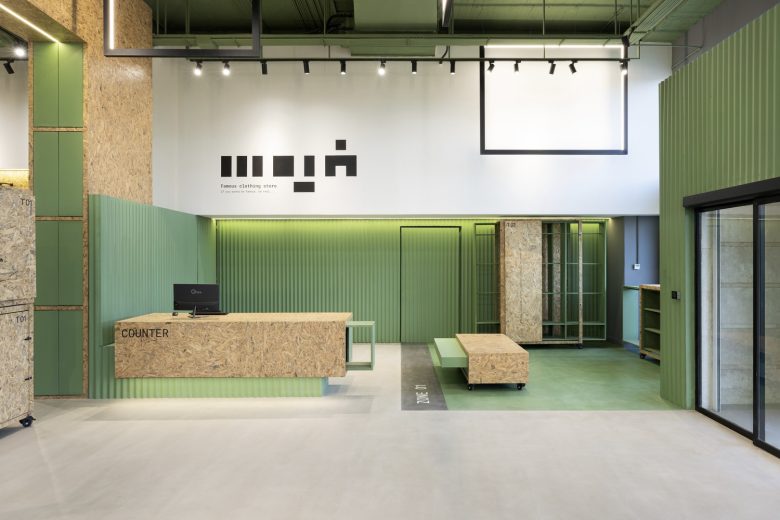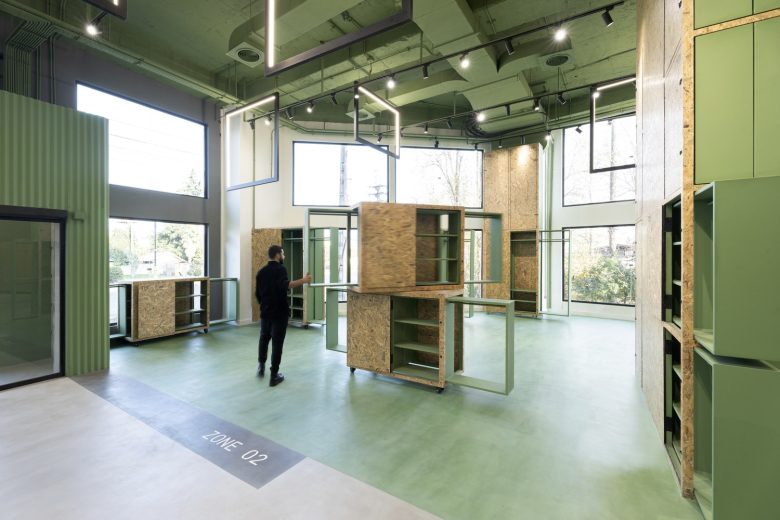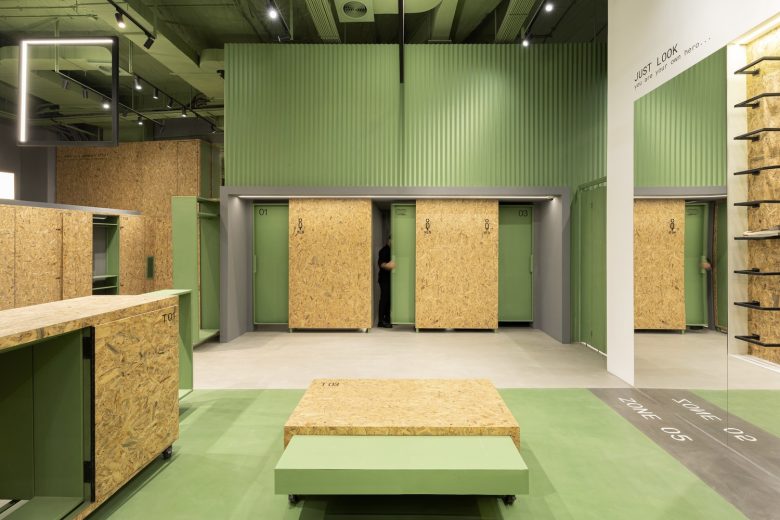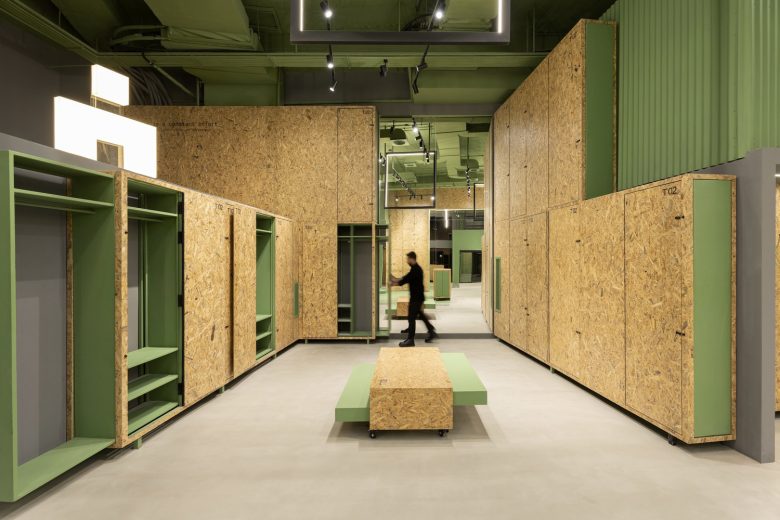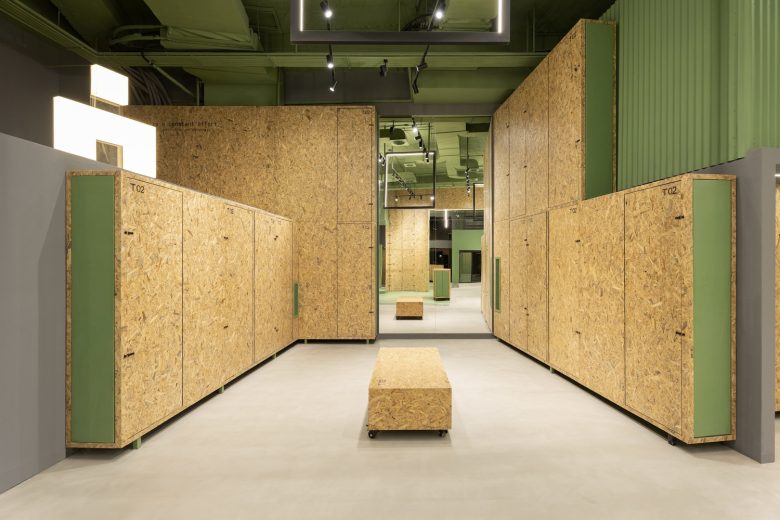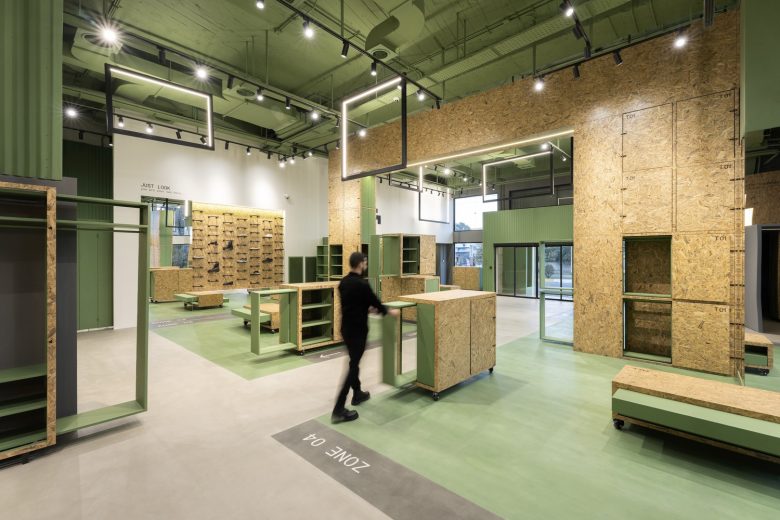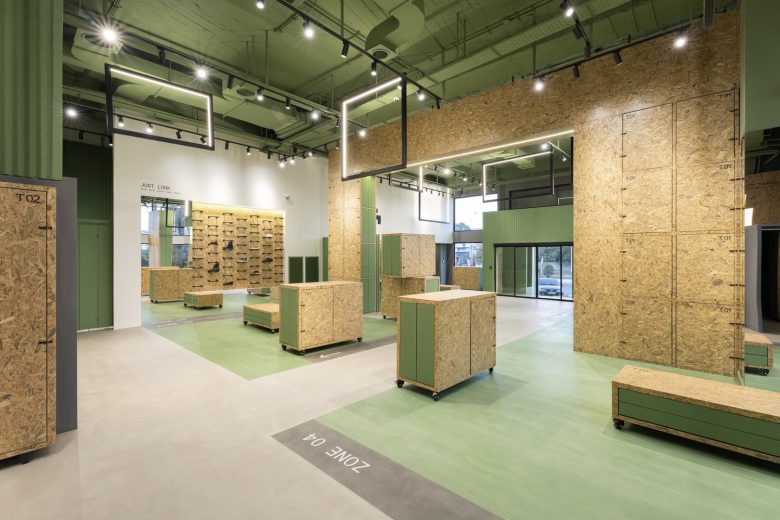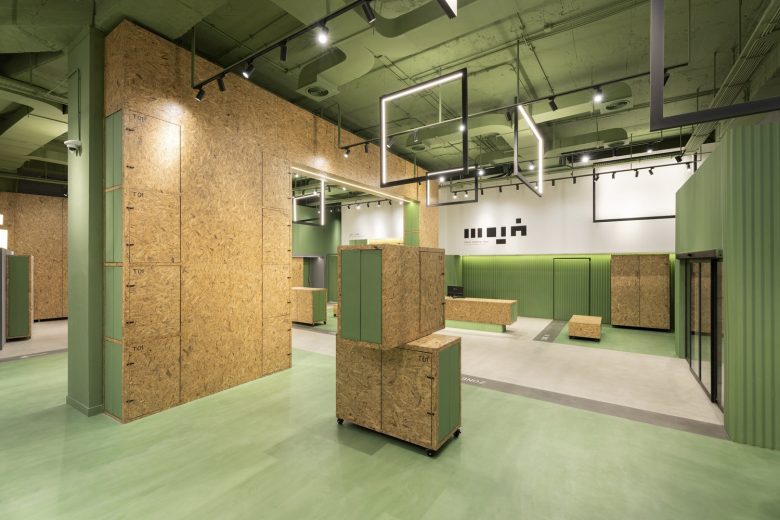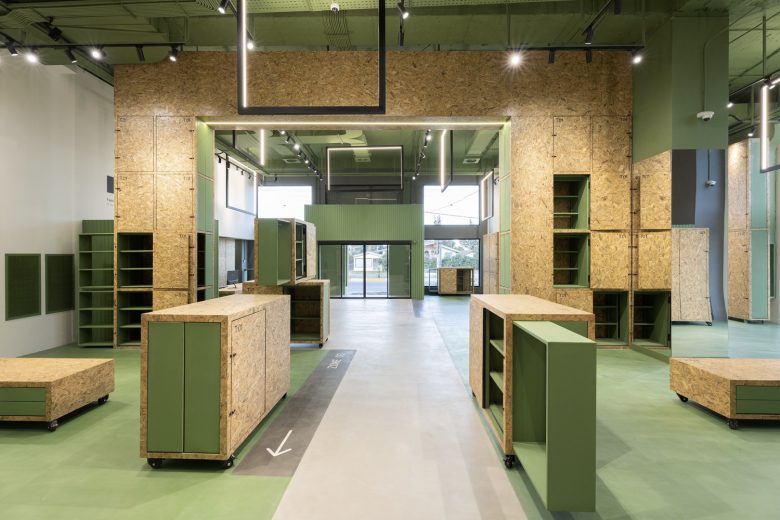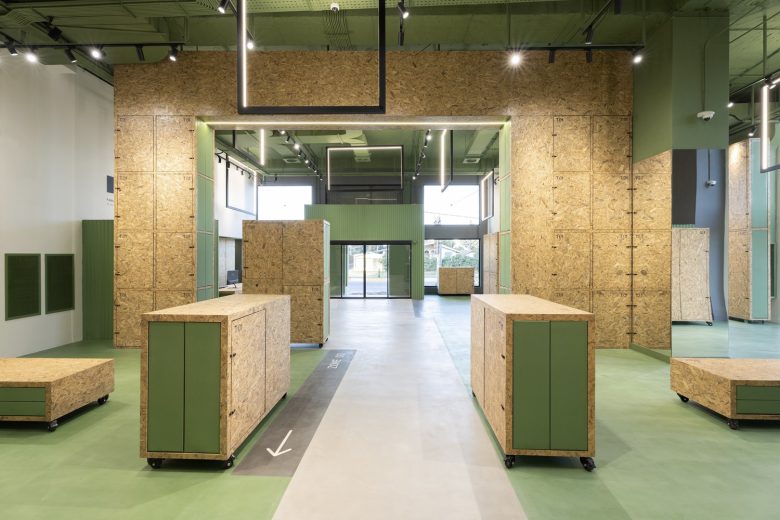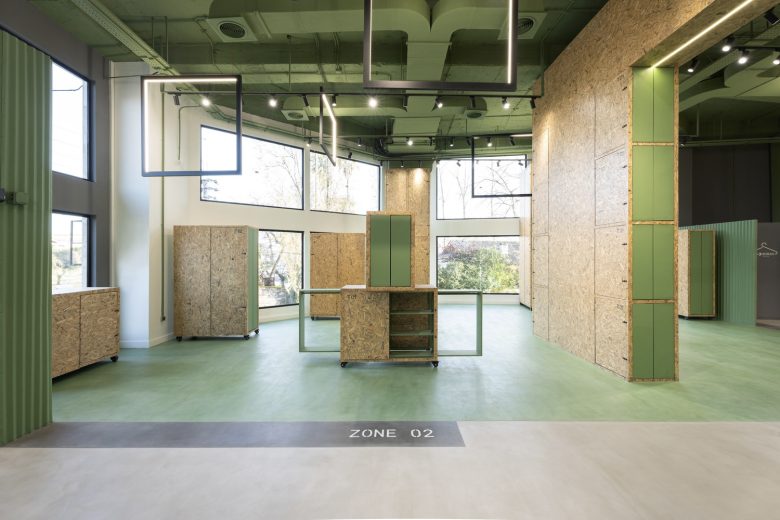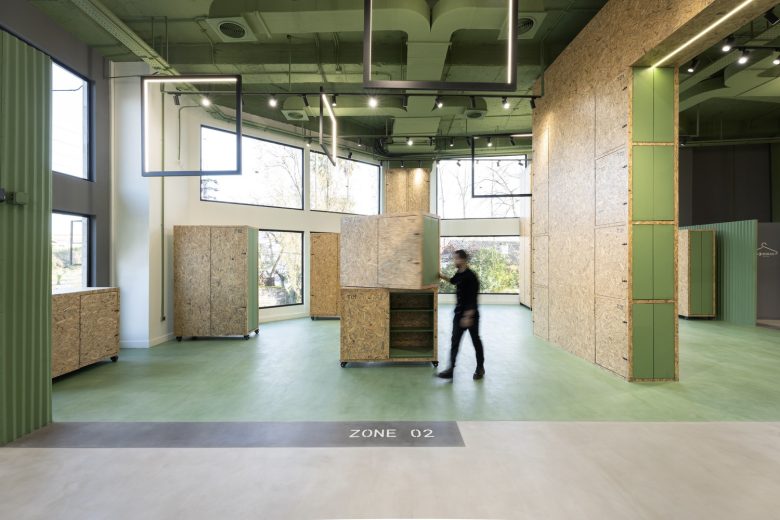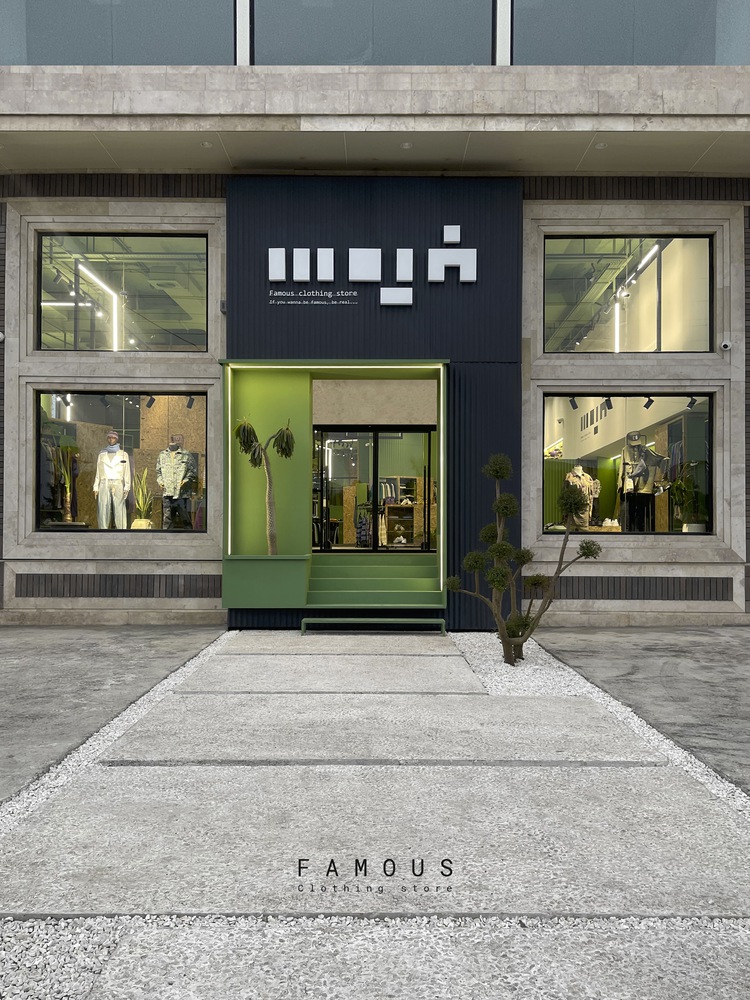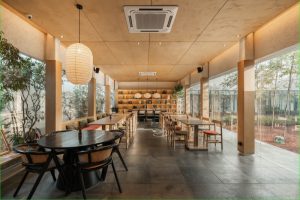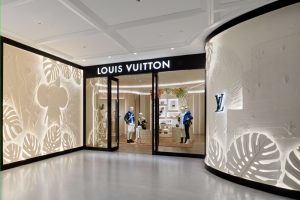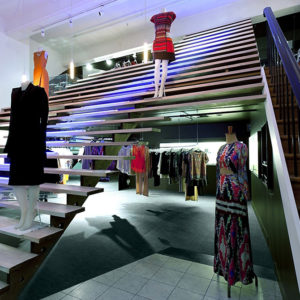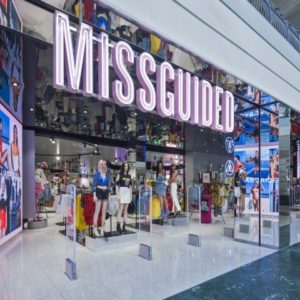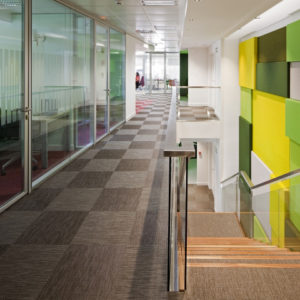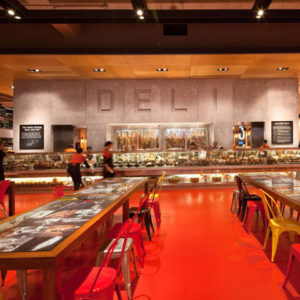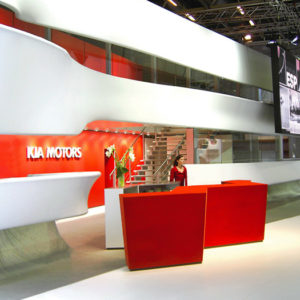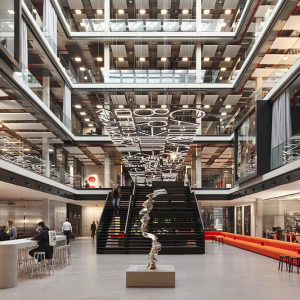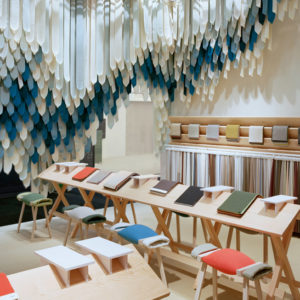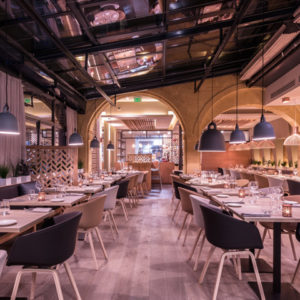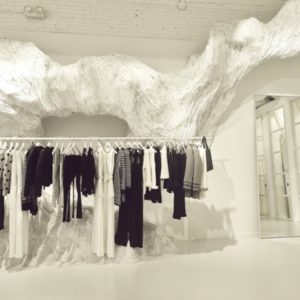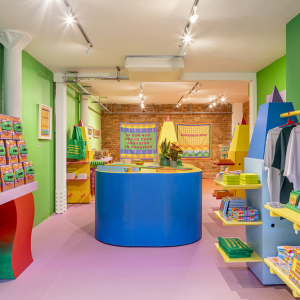
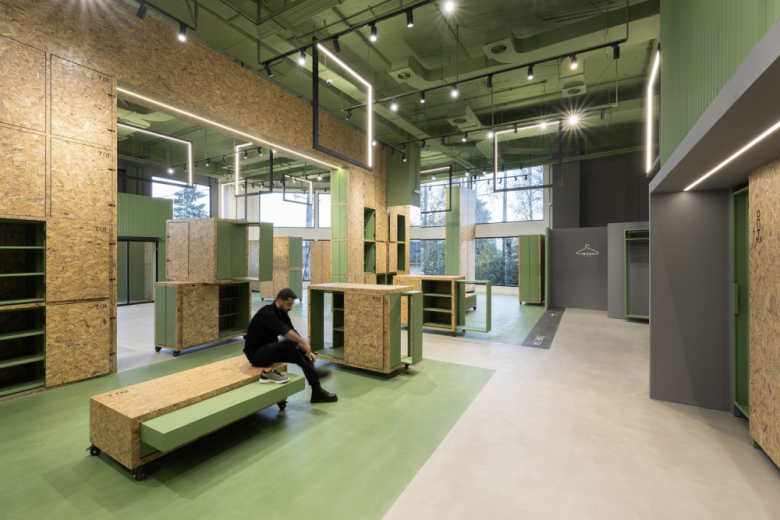
The design of this store was influenced by factors such as “rental property,” “the need for flexibility in layout,” and “the potential for expanding sales lines in the future.” Consequently, the project was developed with a clear emphasis on “flexibility.”
To achieve this, the types of clothing and merchandise were categorized, and three flexible and movable modules called T01, T02, and T03 were designed. These modules were designed in such a way that they can provide the user with “the possibility to change the use,” “reproduction,” and “relocation,” and “providing a diverse visual space for customers through different layouts” at a higher speed. The modules also feature pull-out frames that can be used for storage when not in use.
The modules were covered with relatively inexpensive OSB material with a different wood texture, while other clothing and item hanging frames were made of metal and painted green, which served as the primary brand identifier. The facilities and ceiling structures were also kept visible to create better overall space coordination.
The final section of the store features a fitting room for both ladies and gentlemen, one of which is also used as a storage area for store items. Additionally, areas such as a small dining area, kitchenette, and restroom were created for employee use, located in the right zone of the store and separated from the sales zone through a metal accordion door.
Architects: Neda Mirani
Lead Architect: Neda Mirani
Photographs: Benyamin Jahanshahi
